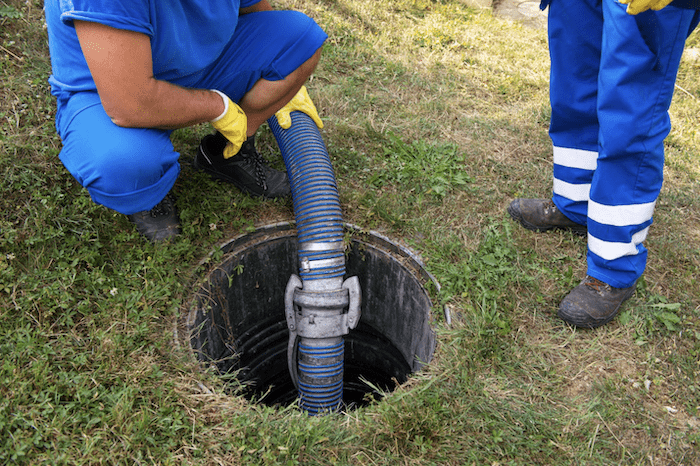Proper maintenance of a septic tank system is what keeps your house running smoothly, and there’s no arguing that. But how exactly do you pump it and how often do you need to do it?
Here’s what you need to know. Keep reading!
How Septic Tanks Work
A septic tank is a key component of a septic system. This is a small-scale sewage treatment system that is very common in areas with no connection to main sewage pipes provided by local governments or private companies.
Septic tanks are used in both urban and rural areas and typically consist of one or more concrete or plastic tanks of 1,000-4,000 liters (260-1,060 gallons) capacity.
How to Pump a Septic Tank
Pumping a septic tank is not a difficult process. But it is important to understand the basics before getting started.
Locate the Septic Tank
Before you can pump your septic tank, you must first locate it. This can be a tricky task if you don’t know where to look. The best place to start is by contacting your local health department. They can give you a general idea of where your septic tank is.
If you’re still having trouble finding it, you can hire a septic tank cleaning service to help you locate it. Once you’ve found your septic tank, you’re ready to begin the pumping process.
Remove the Lid
In order to pump a septic tank system, you need to remove the lid. This is typically done by a professional septic tank pumping service. Once the lid is off, insert a long hose into the tank.
Insert a Suction Hose
Insert a suction hose into the tank. The hose is connected to a truck that pumps the septic tank contents into the truck’s holding tank.
Send Sewage to a Treatment Facility
Pumping the septic tank prevents the wastewater from backing up into the home. The effluent is pumped from the septic tank to a treatment facility where it is treated before being discharged into the environment.
Maintain Your Septic Tank System
In order to maintain your septic tank pump, it is important to have it pumped on a regular basis. Septic tanks can become full of solids over time, which can lead to problems with your plumbing and septic system.
Pumping a septic tank will remove these solids and help keep your system working properly.
Septic Tank Pumping Schedule
The ideal pumping of a septic tank system is every three to five years depending on the size of the tank and the usage of your home.
Larger tanks and homes with more people using them will need to be more frequent pumping. To find a good septic tank pumping schedule, you can ask your local sanitation department.
Average Cost of Septic Tank Pumping
The cost of pumping a septic tank will vary depending on the size of the tank and the company that you use. Most septic tank pumping companies charge between $200 and $400 to pump a septic tank.
What Happens If It Is Not Pumped
If a septic tank system is not pumped, the septic tank will be filled with sewage and wastewater. This sewage and wastewater will then back up into the house and damages the plumbing.
Always remember that the septic tank system needs pumping regularly to prevent this from happening.
Common Septic Tank Problems
One common problem is when the tank becomes full and needs emptying. This is usually due to a leak or because the tank was not properly maintained and cleaned. To avoid this problem, have your septic tank inspected and emptied regularly.
Another common problem is when sewage backs up into the home. This is usually due to a blockage in the tank or pipes. To avoid this, have your septic tank inspected and cleaned regularly.
The best way to avoid septic tank problems is to have your tank inspected and cleaned regularly. By doing this, you can avoid costly repairs or even having to replace your septic tank.
What You Should Never Do to Your Septic Tank
Your septic tank is one of the most important pieces of your home’s plumbing. Without it, your home would not be able to function. You can extend the life of your septic tank by following these tips:
- Use water efficiently
- Don’t flush anything else
- Don’t put grease down the drain
- Don’t put food waste down the disposal
- Don’t overuse your washing machine or dishwasher
- Don’t plant trees or shrubs near your septic tank
Septic Tank Treatments
Aside from pumping your septic tank regularly, be sure to use septic-safe products in your home – this includes things like cleaners, soaps, and detergents. Using these products will help to prevent any damage to your septic tank or leach field.
Finally, be sure to monitor your home’s water usage. Too much water can put a strain on your septic tank and lead to problems. By following these simple tips, you can help to keep your septic tank in good working order.
Improve Your Septic Tank System Today
Your septic tank is an important part of your home that you should maintain accordingly. This includes pumping it out every three to five years and having it inspected regularly.
By taking these steps, you can help to prevent costly repairs and keep your septic tank system functioning properly.
Did you find this article helpful? Check out the rest of our blogs!


